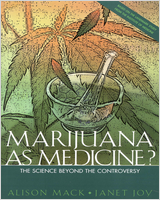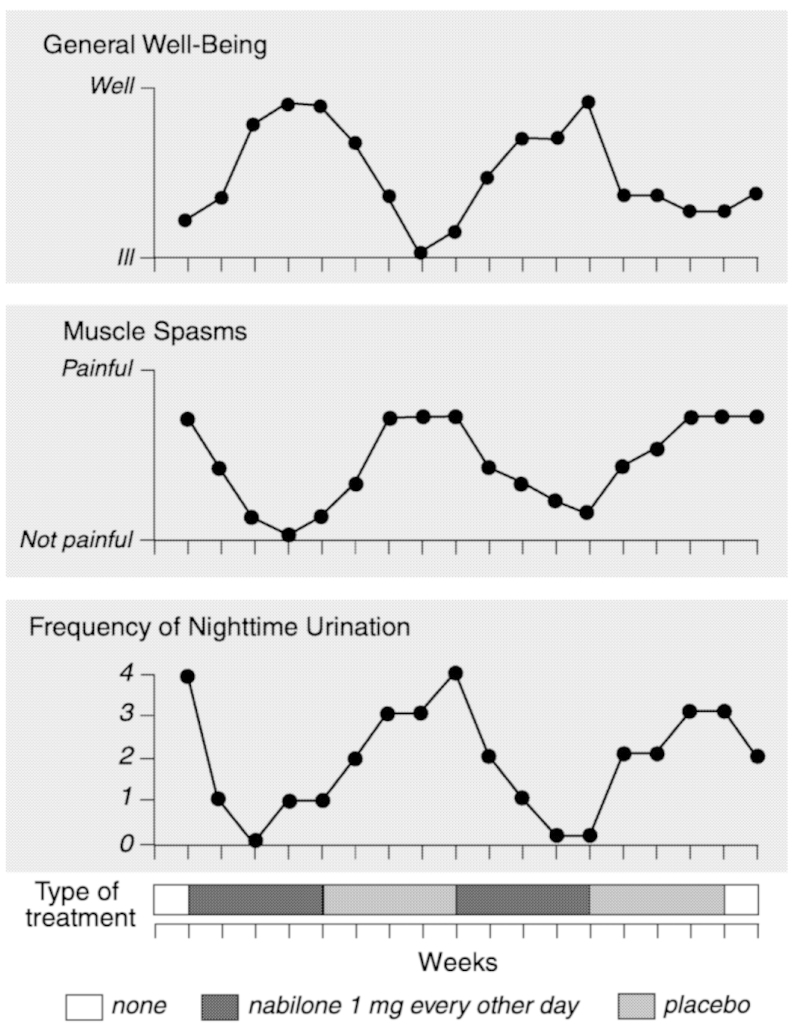From: 7, MARIJUANA AND MUSCLE SPASTICITY

NCBI Bookshelf. A service of the National Library of Medicine, National Institutes of Health.

Effect of nabilone on multiple sclerosis symptoms. This chart shows the results of a trial in which a 45-year-old man with MS received treatments with the THC analog nabilone, alternating with a placebo. While the results suggest that THC might relieve spasticity, the study has several flaws. First, nabilone sedated the patient, which may have caused him to feel some relief; the placebo did not. Second, instead of measuring spasticity, the researchers measured the patient's perception of pain, which may have been relieved without any improvement in spasticity.
Because nighttime urination is not governed by conscious control, improvement in this symptom appears to provide stronger evidence that THC reduced spasticity. On the other hand, it may merely indicate that THC helped the patient sleep better. While intriguing, this single-patient trial does not prove that THC can reliably relieve spasticity.
(Figure used by permission of C.N. Martyn and The Lancet. Nabilone in the treatment of multiple sclerosis. The Lancet 345(March 4, 1995):579.)
From: 7, MARIJUANA AND MUSCLE SPASTICITY

NCBI Bookshelf. A service of the National Library of Medicine, National Institutes of Health.